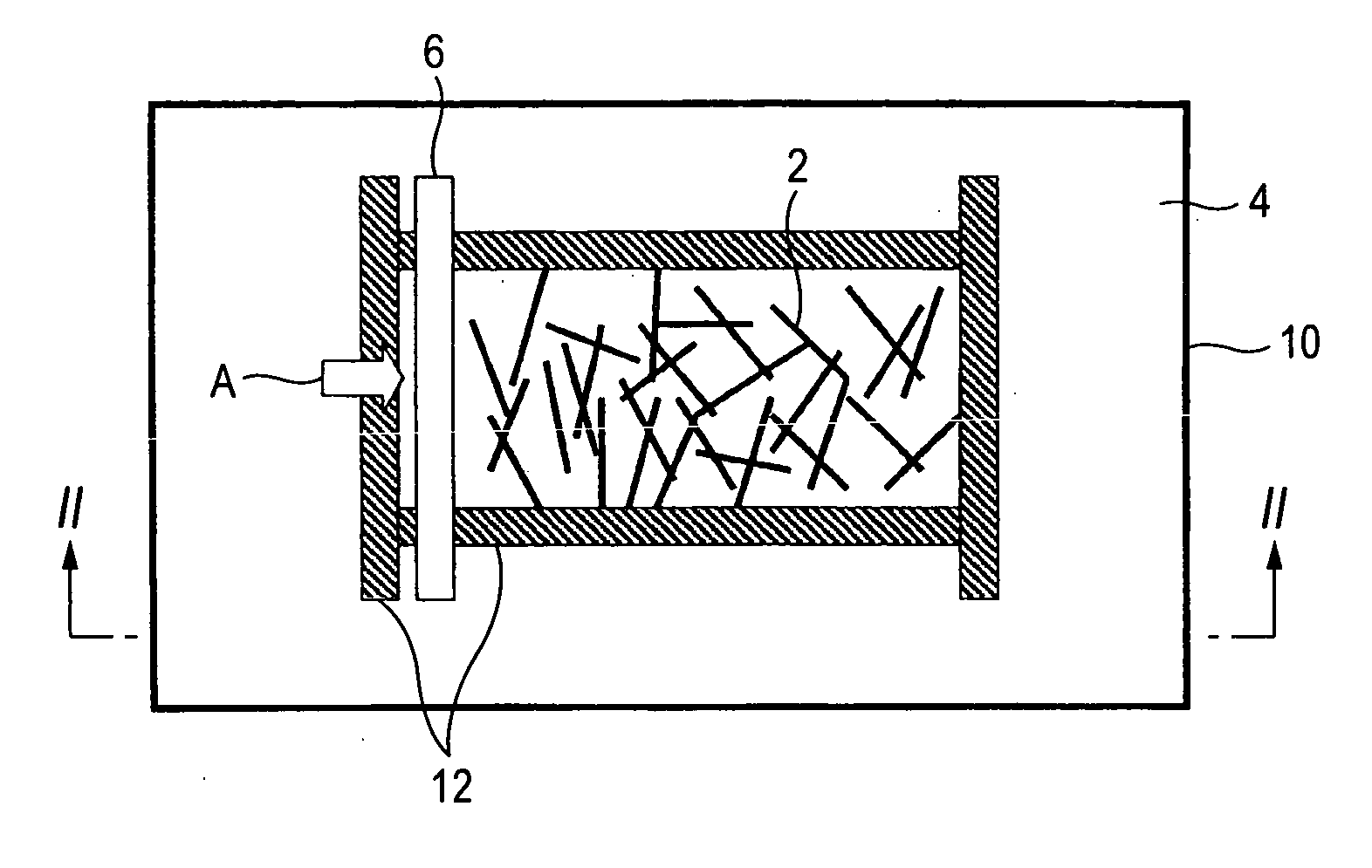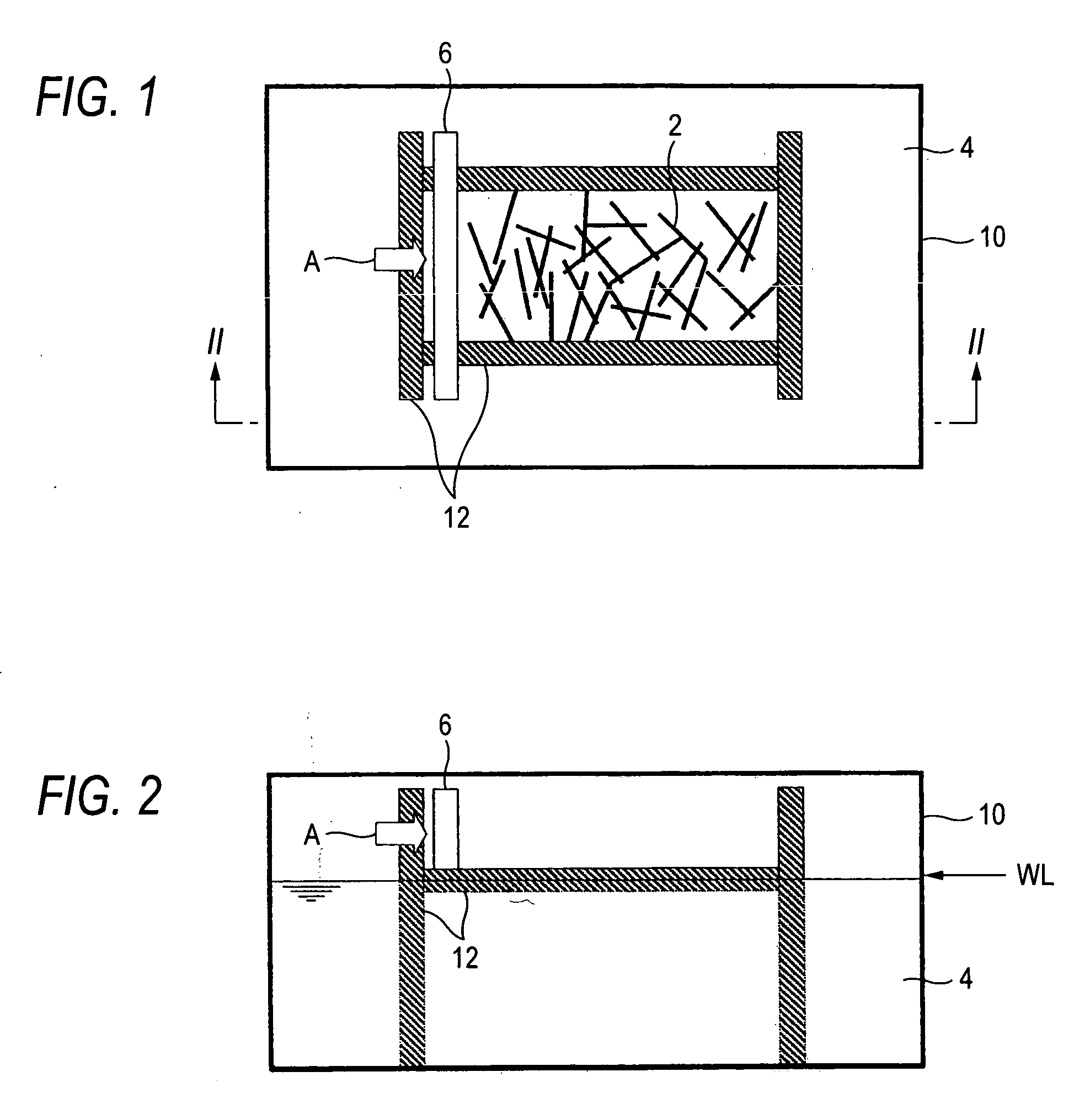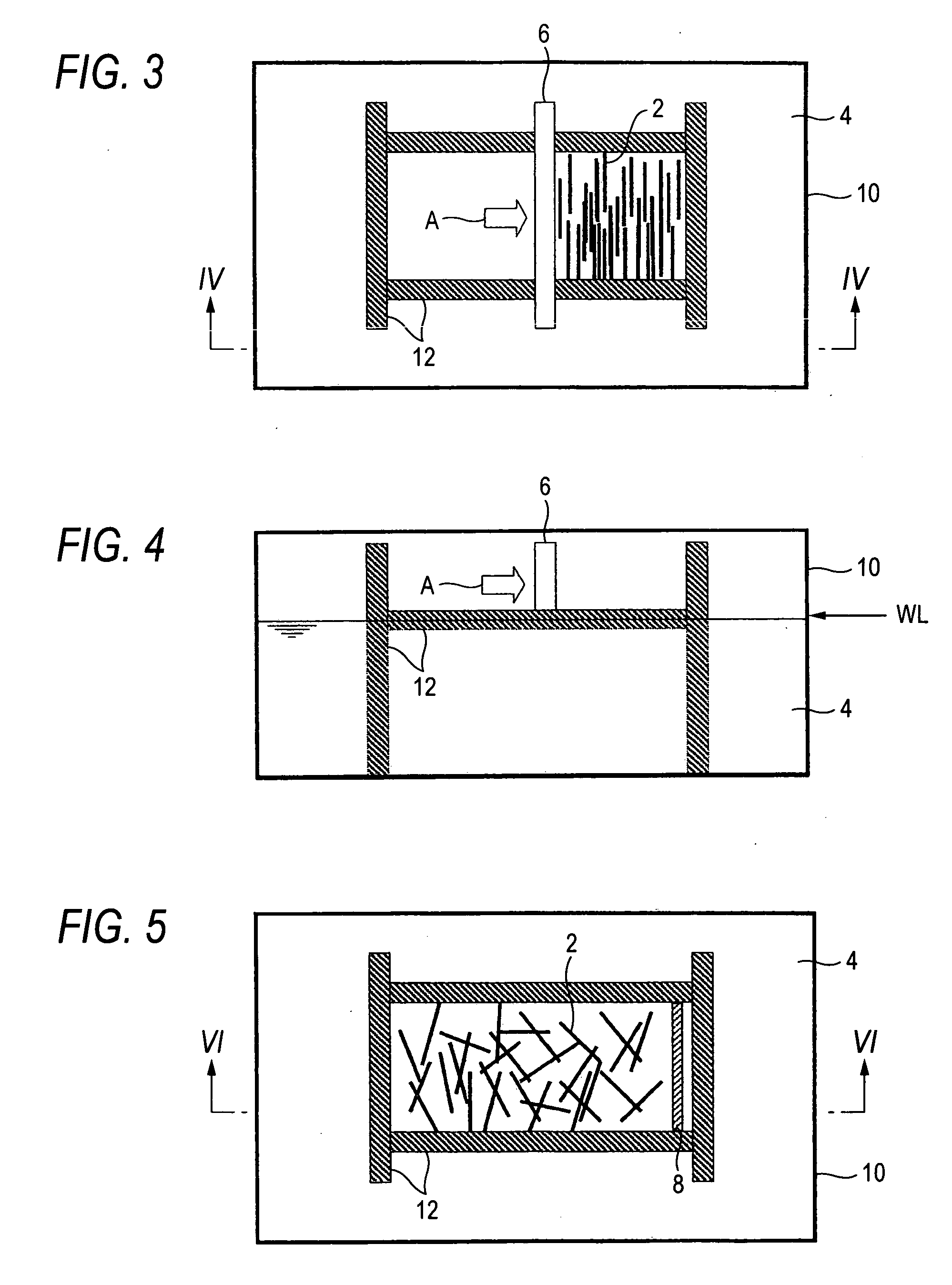Method for forming carbon nanotube thin film
a carbon nanotube and thin film technology, applied in nanotechnology, material nanotechnology, coatings, etc., can solve the problems of inability to apply carbon nanotubes having no functional groups to such substrates as plastics, inability to form thin films, and inability to achieve mass production, etc., to achieve the effect of convenient transfer
- Summary
- Abstract
- Description
- Claims
- Application Information
AI Technical Summary
Benefits of technology
Problems solved by technology
Method used
Image
Examples
example 1
(SWNT with Hydrophobic Ionic Liquid; Compressed)
(i) Purifying Step
[0097] Single wall carbon nanotube powder (purity: 40%, produced by Sigma-Aldrich, Inc.) is sieved through a mesh (pore size: 125 μm) to remove coarse aggregated bodies, and 30 mg of the carbon nanotube powder thus obtained (number average particle diameter: 1.5 nm, number average length: 2 μm) is heated in a muffle furnace at 450° C. for 15 minutes to remove carbonaceous substances other than carbon nanotubes. 15 mg of the resulting powder remaining in the furnace was immersed in 10 mL of 5N hydrochloric acid (obtained by diluting concentrated hydrochloric acid (a 35% by mass aqueous solution, produced by Kanto Kagaku Corp.) twice with pure water) for 4 hours to dissolve catalyst metals.
[0098] The mixture of the carbon nanotubes and hydrochloric acid is filtered to recover the carbon nanotubes as precipitate. The precipitate thus recovered is further purified by subjecting to the aforementioned operation includi...
example 2
(SWNT having Carboxyl Groups with Hydrophilic Ionic Liquid; Compressed)
(i) Addition of Carboxyl Groups (Synthesis of Carbon Nanotube Carboxylic Acid)
[0109] Single wall carbon nanotube powder (purity: 40% or more, produced by Sigma-Aldrich, Inc.) is purified in the same purifying step as in Example 1 to obtain 30 mg or more of single wall carbon nanotube powder having a high purity (specifically, the purity is estimated as being 90% or more).
[0110] 30 mg of the single wall carbon nanotube powder thus obtained is weighed and added to 20 mL of concentrated nitric acid (a 60% by mass aqueous solution, produced by Kanto Kagaku Corp.), followed by being refluxed at 120° C. for 5 hours, so as to synthesize carbon nanotube carboxylic acid.
[0111] After cooling the reaction mixture to room temperature, the mixture is subjected to centrifugal separation at 5,000 rpm for 15 minutes to separate a precipitate from a supernatant. The precipitate thus recovered is dispersed in 10 mL of pure w...
example 3
(MWNT with Hydrophobic Ionic Liquid; Not-Compressed)
(i) Mixing Step
[0117] 10 mg of multiwall carbon nanotube powder (purity: 95%, produced by Sigma-Aldrich, Inc.) is added to 1 g of 1-butyl-3-methylimidazolium hexafluorophosphate as a hydrophobic ionic liquid (produced by Kanto Kagaku Corp.), followed by mixing in a mortar for 15 minutes.
(ii) Film Forming Step
[0118] 1 μL of the mixed liquid obtained in the mixing step is dropped and spread on a water surface (area: 125 cm2) comparted with a frame and a float (dropping step).
[0119] A glass substrate, which has been immersed in advance, is withdrawn in a direction perpendicular to the water surface to transfer the carbon nanotube thin film to the glass substrate (drawing up step). The carbon nanotube thin film is air-dried by allowing to stand as it is to form the carbon nanotube thin film on the surface of the glass substrate.
[0120] The carbon nanotube thin film thus obtained on the surface of the glass substrate is observed...
PUM
| Property | Measurement | Unit |
|---|---|---|
| Surface tension | aaaaa | aaaaa |
Abstract
Description
Claims
Application Information
 Login to View More
Login to View More - R&D
- Intellectual Property
- Life Sciences
- Materials
- Tech Scout
- Unparalleled Data Quality
- Higher Quality Content
- 60% Fewer Hallucinations
Browse by: Latest US Patents, China's latest patents, Technical Efficacy Thesaurus, Application Domain, Technology Topic, Popular Technical Reports.
© 2025 PatSnap. All rights reserved.Legal|Privacy policy|Modern Slavery Act Transparency Statement|Sitemap|About US| Contact US: help@patsnap.com



